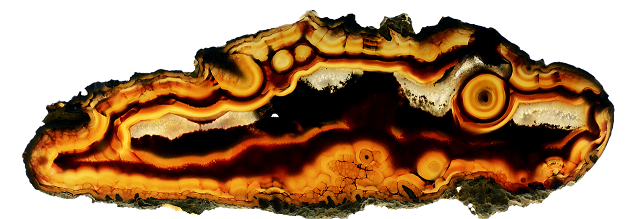Quartz
In my Amethyst Blog, we learned that quartz (SiO2) makes up over 10% of the Earth’s crust and is the most abundant mineral on earth. However, the only colour of the rainbow we touched on was purple (amethyst).
There are more varieties of quartz than any other mineral. The different types of quartz are characterized by a specific trace element (like iron in amethyst) or inclusion.
Let’s explore some of the kaleidoscope of quartz!
Clear Quartz
Colorless and transparent
No inclusions or trace elements
Smoky Quartz
Light brown to almost black
Formed when clear quartz is naturally radiated by surrounding rocks.
Additional radiation will darken the crystal
Milky Quartz
White to greyish white
Formed when tiny bubbles get trapped in the crystal structure during formation
Rose Quartz
Light pink
Formed when titanium is trapped in the crystal structure
Citrine
Yellow to brown
Formed when hydrous iron oxide is trapped in the crystal structure.
Amethyst
Purple
Formed when iron is trapped in the crystal structure
Hawk’s Eye (Blue Tiger’s Eye)
Grey to blue
Formed in tiny cracks when fibrous quartz and blue crocidolite grew together.
Chalcedony
Microcrystalline Quartz - Various Colours
Forms when silica-rich water percolates through fractures and voids depositing microscopic quartz particles. This forms microcrystalline layers that can vary in colour due to microscopic or macroscopic inclusions.
Includes carnelian (reddish orange to blood red), Onyx (black & white), Bloodstone (green & red), jasper (various), agate (various)
Tiger’s Eye
Gold to brown
Hawk’s Eye that has been weathered causing the iron in crocidolite to oxidize to the gold to brown.
Aventurine
Sparkling green, brown, reddish brown, peach, yellow & white
Inclusions of shimmery minerals. Colour is dependent on the type of mineral inclusion.
Green - green mica (fuchsite)
Brown - pyrite
reddish-brown - hematite
Blue - dumortierite or crocidolite
This colourful bunch covers some of the more commonly seen few types of quartz. Let me know if you would like me to expand on any of the mineral discussed in this post.
For my next post, I’m going to explore some turquoise minerals. You’ll want to hear about these minerals and their imposters!














